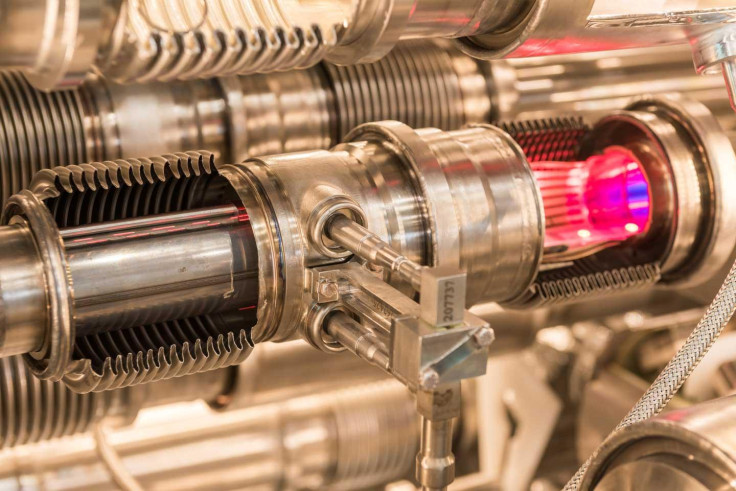Large Hadron Collider restarts after two-year shutdown to resume hunt for dark matter

The world's biggest atom smasher, the Large Hadron Collider (LHC) has restarted for the first time since 2013.
Scientists hope the upgrade will allow them to smash protons together at nearly double the energy previously reached.
Protons circling the machine's 27km tunnel are now travelling in both directions inside parallel pipes, just under the speed of light.
The protons were injected at a relatively low energy to begin with. But over the coming months, engineers hope to gradually increase the beams' energy to 13 trillion electronvolts.
Sensors examine the collisions would could lead to the discovery of new sub-atomic particles, pushing forward in the understanding of physics.
Rolf Heuer, the director-general of Cern, which operates the LHC, told engineers and scientists at the lab: "Congratulations. Thank you very much everyone… now the hard work starts".
The beams arrived a week or so later than originally scheduled, due to an electrical fault which has now been resolved.
Professor Tara Shears, from the University of Liverpool, works on one of the LHC's four big experiments that will soon begin work.
"Of course in every particle physics experiment we've ever done, we've been wanting to make a big, unknown discovery," Shears told BBC News.

Among the areas that will be examined are dark energy – the force that accounts for the universe expanding faster and faster, as well as explaining why galaxies spin much faster than they should.
The LHC's collisions create temperatures not seen since just after the Big Bang. Physicists hope to find new evidence from the debris left from the protons smashing into one another – possibly new particles or hidden dimensions.
There are hopes to find 'supersymmetry' which proposes as yet unseen additional particles. But so far the LHC has not yet found evidence for anything "supersymmetrical".
The first collisions are due to be carried out in May 2015 at the earliest.
What is the Large Hadron Collider?
The Large Hadron Collider (LHC) is the world's largest and most powerful particle accelerator and the single largest machine in the world. It took thousands of scientists, engineers and technicians decades to plan and build, and it continues to operate at the very boundaries of scientific knowledge.
It first started up on 10 September 2008, and remains the latest addition to CERN's accelerator complex. The LHC consists of a 27km ring of superconducting magnets with a number of accelerating structures to boost the energy of the particles along the way.
Inside the accelerator, two high-energy particle beams travel at close to the speed of light before they are made to collide. The beams travel in opposite directions in separate beam pipes – two tubes kept at ultrahigh vacuum. They are guided around the accelerator ring by a strong magnetic field maintained by superconducting electromagnets.
The electromagnets are built from coils of special electric cable that operates in a superconducting state, efficiently conducting electricity without resistance or loss of energy. This requires chilling the magnets to ‑271.3°C – a temperature colder than outer space.
With a budget of €7.5bn (£6.19bn) the LHC is one of the most expensive scientific instruments ever built.
© Copyright IBTimes 2025. All rights reserved.






















